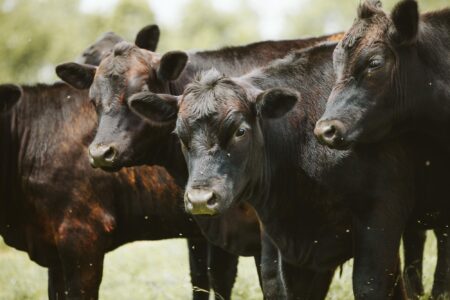Genius is a word used often with Edward A. Johnston.
How else could you describe a person who, during his 40-year career with International Harvester, either created or oversaw the design of every major advance that company introduced to agriculture and transportation from 1900 to the late 1930s?
Creator of both the first truck and first practical tractor in North America, Johnston earned 171 patents, as well as many patents pending, before his death in 1947.
Upon his passing, then-IHC president Harold McCormick remarked that Johnston “was to the agricultural implement industry about what Charles Kettering [founder of Delco and head of research for General Motors] has been to the automotive industry. There was no phase of farming operations on which the Johnston influence was not exerted, whether it was plowing, cultivating, or harvesting of the crop, or trucking it to market.”
Family of Inventors
Unsurprisingly, IHC’s Johnston came from a family of inventors. His grandfathers and uncle were implement inventors. Their influence rubbed off on Johnston, whose incredible journey in engineering began at the ripe age of 14 when he went to work for the Johnston Harvester Co. in New York. Just a year later, in 1894, he jumped ship to join McCormick’s Experimental Department even though he lacked an engineering degree.
Soon inventions and innovations came flying out of Johnston’s fruitful mind and talented hands. By 1900 he had built his first engine (which featured rotary valves no less) that ran in one of the early cars in North America.
First Live PTO
A major advance for him occurred in 1900. Working with colleague Bert Benjamin (who would later pioneer the creation of the Farmall), Johnston created a two-cylinder engine, paired it with a two-speed transmission nestled in a chassis and powering a cutter bar Benjamin had created. Tabbed the Auto-Mower, this innovation featured one of the first successful power take-offs on a tractor. Furthermore, this PTO operated independently from the transmission. The Auto-Mower’s operator could shift the transmission to a lower gear or to neutral to stop the tractor, but power continued to be supplied to the mower. Thus, a farmer could either shift down or stop the tractor entirely if they hit heavy cutting conditions.
This advance marked the first “live” PTO, an innovation that wouldn’t be introduced on production tractors until the 1940s. The Auto-Mower was displayed at the Paris Exposition in 1900, and Johnston applied for a patent for his live PTO in 1902.
Johnston’s success with the Auto-Mower attracted the attention of Keystone Co. in Illinois, which hired him to develop a line of grain and hay equipment.
First Pickup Truck
Meredith Operations Corp.
That relationship lasted but a year when, in 1905, International Harvester Co. (created from the McCormick and Deering merger in 1902) lured him back and put him in charge of designing and constructing a vehicle for the farm.
Johnston boldly set out to create a new automotive line, designing a high-wheeled vehicle that could take the farmer, his family, and produce to market. In doing so, Johnston fashioned the first pickup truck, the Auto-Buggy.
Also sold as the AutoWagon, which had a larger cargo bed, these vehicles would go on to spawn the international truck division that would become an industry leader in over-the-road horsepower.
IHC’s First Production Tractor
Three years after the creation of the Auto-Buggy, IHC made the commitment to start producing a farm tractor. Johnston was summoned to Chicago from Akron, Ohio, where he was based. The mission: Build a tractor and get it into production ASAP. Working 12 hours per day, seven days per week in a barn and nearby tent, Johnston’s team created a monster of a tractor that would be tabbed the 20-Horsepower Friction Drive. This marked IHC’s entry into the tractor market.
Johnston’s strong work ethic and creative mind landed him in charge of supervising the construction and operation of IHC’s Tractor Works, a position he held until 1915. That same year he was elevated to assistant manager of the engineering department, and in 1922 he was appointed director of engineering. While serving in that role, Johnston oversaw not only all of International’s tractor design, but also motor truck development.
By the mid-1930s he was an IHC vice president, in charge of all engineering and patents. Although his days were filled with managerial duties, Johnston still found the time to invent, topping off his storied career by modifying and perfecting a cotton-picking machine IHC had bought.
His work would be used to create the first cotton picker, which International Harvester introduced in December 1942, five years before Johnston’s death.
Under Johnston’s direction and with his collaboration, another IHC inventive genius was cultivated: Bert Benjamin, who would create the world’s first successful general-purpose tractor, the Farmall Regular.


:max_bytes(150000):strip_icc()/1907-ihc-102708235_preview-6d967f9cbc8e48b0b916de1ce80f1cd5.jpg)
:max_bytes(150000):strip_icc()/Farmer-at-work-under-storm-1091385068_1256x838-721ac36a3dd941cc9e3c3949d1d2405b.jpg)
:max_bytes(150000):strip_icc()/Kevin-Matthews-North-Carolina-Deere-combine-2-2000-933a9b4a41074f4e8519fb2265cc2a50-93c959812f904cb9a2c50b998f8868de.jpeg)




:max_bytes(150000):strip_icc()/49445657561_b1fcbfbcec_o-ec05e784dff44a8498ec134555cf02c3.jpg)
